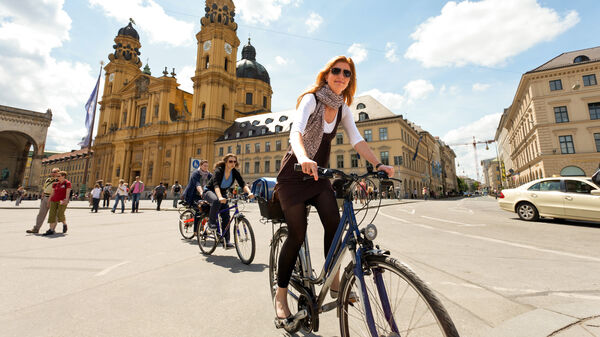Munich’s Revival


By Rick Steves
Reduced to rubble by Allied bombs during World War II, Munich has made an impressive recovery, becoming one of Europe's most livable big cities. That's thanks to an unlikely combination of progressive politics, respect for Old World traditions, Bavarian beachcombers…and Nazi photographers.
Let me explain: By 1944, as the Second World War entered its final year, it was clear that Munich, and much of its great art, could no longer be spared from Allied bombings. Treasures from the city's museums (closed since 1939) had long since been secretly transferred to other locations. However, because Hitler feared that a broad-daylight removal of art from churches and civil buildings might undermine public confidence in the Nazi regime, most of the city's great art treasures remained vulnerable.
Rather than rescue Munich's art and sandbag its historic buildings, the Nazis took an unusual step. They systematically photographed everything in sight…while it lasted. As predicted, by April 1945, Allied bombings had destroyed most of the city's historic center. The rest was finished off by a decade of rain and freezing winters. Only now are the restorations — based on those Nazi photographs — finally being wrapped up.
The "shell grotto" at Munich's Residenz palace is an inspirational story of reconstruction. This artificial grotto was an exercise in man controlling nature — a celebration of humanism, which was in vogue when it was built in the 1550s. This strange structure is made from Bavarian freshwater shells, with Mercury (the pre-Christian god of trade and business) overseeing the action, and red wine spurting from the mermaid's breasts and dripping from Medusa's head in the courtyard. The palace and the grotto were demolished by WWII bombs. After the war, people had no money to contribute to the reconstruction — but they could gather shells. All the shells in today's reconstructed grotto were donated by small-town Bavarians.
Deeper inside the palace, observant visitors notice messy scars on many of the old royal portraits. In 1944, when bombs were imminent, Nazi commanders gave the hasty order to slice the portraits out of each frame in the Gallery of the Wittelsbach Family, and hide them all away.
As Germany put itself back together after the war, cities established commissions to debate how they'd rebuild their cities. Should they restore the old towns, or bulldoze the mess and go modern? While Frankfurt voted to bulldoze (hence its Manhattan-esque feel today), Munich voted — by a close margin — to rebuild its old town, with the help of Nazi photographs. Strict regulations maintain Munich's Old World ambience. For example, buildings cannot exceed the height of the church spires. Today, Munich has no real suburban-style shopping malls. But its downtown is vital, filled with people who come to shop.
Although the capital of a very conservative part of Germany, the city of Munich has long been a liberal stronghold (in the chaos following World War I, it was briefly the world's first non-Bolshevik "people's republic"). This tradition of outside-the-box thinking also helps make Munich livable. Since 1948, Munich's mayors have mostly come from the liberal and labor-friendly Social Democratic Party. Fearing that fast food chains will replace the old fashioned market stalls and quaint eateries that make Munich's Viktulienmarkt one of Europe's most charming squares, the city subsidizes the stalls' rent so they can survive on the some of Germany's most expensive real estate. The city's policies are pedestrian friendly, too. You'll find most of the town center closed to car traffic, with plenty of bike lanes and green spaces. On summer Mondays, the peace and quiet makes way for "BladeNight" — when streets in the center are closed to cars and as many as 30,000 in-line skaters swarm around town in a giant party on wheels.
If you visit, you may notice you can speak softly and still be heard here, often with an aural backdrop of more birdsong than motor noise. Surrounded by glorious art and architecture, it's easy to forget you're in the center of a big city that was rubble such a short time ago.

